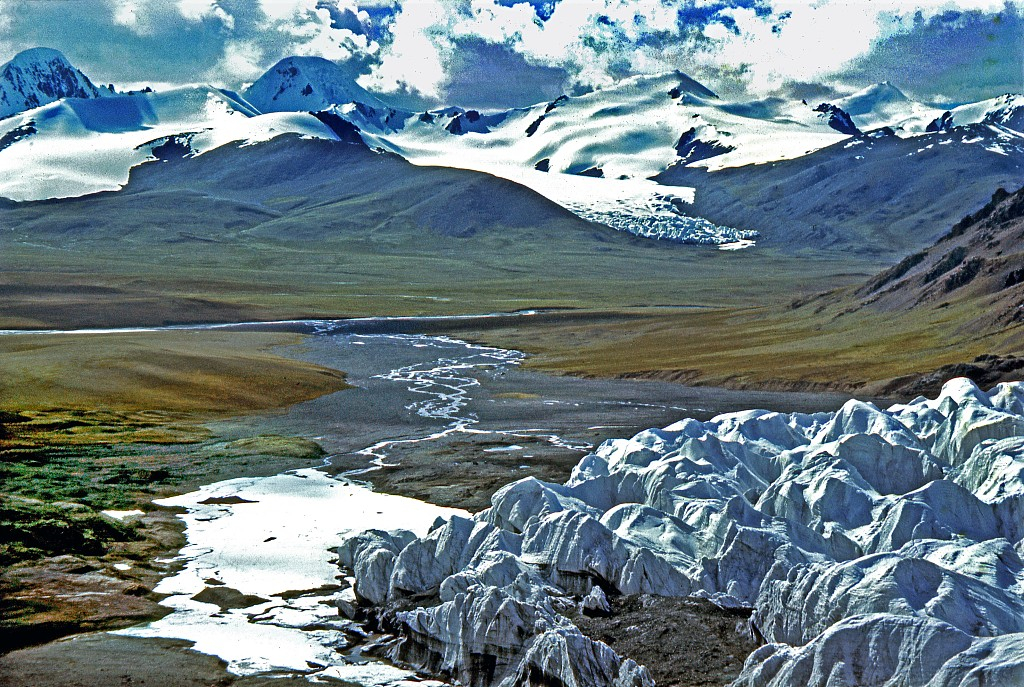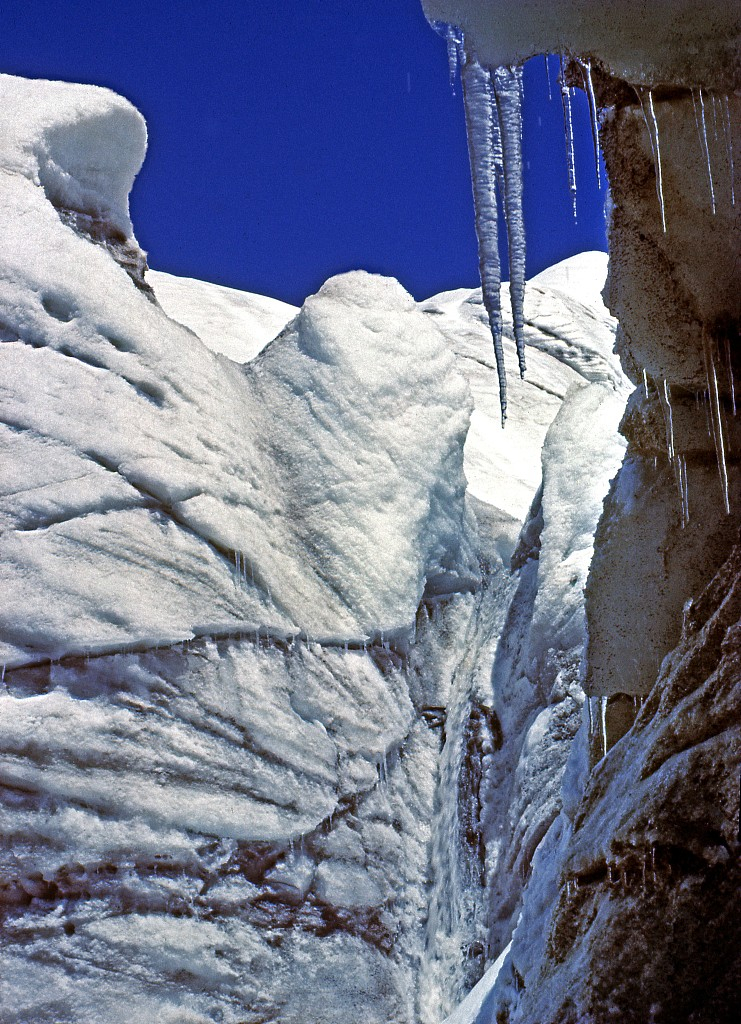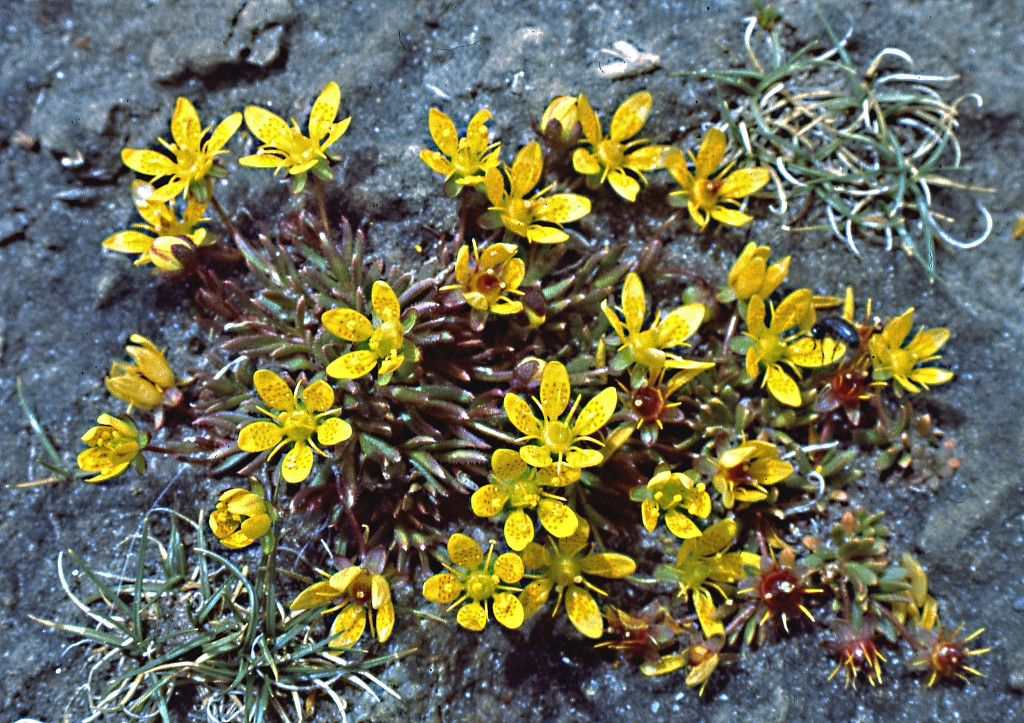Just a few months ago, Antarctica, the coldest and driest continent on Earth was reported to register a temperature of over 20 degrees Celsius for the first time. Global warming has caused ice sheets here to melt and glaciers to retreat.
Actually, no glaciers in the world nowadays can escape the fate of melting away. Neither can the Jianggendiru Glacier in northwest China's Qinghai Province.

The Jianggendiru Glacier at the headstream of the Yangtze in 1976. /VCG
The Jianggendiru Glacier at the headstream of the Yangtze in 1976. /VCG
Jianggendiru may be an odd and unfamiliar name, but its meltwater is used by people along the Yangtze River. The headwater of the Yangtze River, the Tuotuo River, originates from the Jianggendiru Glacier.
The glacier is made up of two parts. One in the north, the other in the south. Hundreds of years ago, the ends of the two parts were connected. Climate change has made glaciers retreat annually and pushed them away from each other, like an annoying parent who breaks up a couple in love.

The melting Jianggendiru Glacier in 1976. /VCG
The melting Jianggendiru Glacier in 1976. /VCG
According to research by Green River, an NGO founded in Sichuan Province, the total length of the glacier in the south has shortened by 750 meters between 1969 and 2012, while the length of the glacier in the north has shortened by 1,500 meters.
Some people may wonder why it is a bad thing if the melting glacier can supply the river with more water. In fact, the amount of river water can increase in the beginning. However, when it passes a certain threshold, the river flow will decrease to an extremely low level, causing a water shortage in regions dependent on glacier meltwater.

Yellow flowers near the Jianggendiru Glacier. /VCG Photo
Yellow flowers near the Jianggendiru Glacier. /VCG Photo
Besides, the melting glacier may cause decreasing plant diversity and degradation of grasslands, directly affecting the livelihoods of people living nearby. It's urgent to protect the Jianggendiru Glacier and the headwater region.
In 2005, the Sanjiangyuan National Nature Reserve came into operation. A report released in April this year shows that the area is seeing more rainfall and lakes are expanding, indicating an improved environment.
Hopefully, the Jianggendiru Glacier and many glaciers can slow down the pace of disappearing if more efforts are put into conservation.
Tales of Two Rivers
Since ancient times, humans have settled down near the river basin across all continents. The Yangtze River and the Yellow River in China are the cradles of Chinese civilization. In history, the two rivers have endowed people with bountiful water, food and other resources, but now they are sick. The pollution and dropping biodiversity have greatly impacted wildlife and man. In this series, CGTN takes you to both rivers to see how animals, plants and humans live.
Read More:
Why has Poyang Lake entered into its longest dry season?
From grassland to desert: Exploring the headwater of Yellow River
Is the "starry sea" the headwater of Yellow River?
Where is the headstream of the Yangtze?
What else in the Yangtze River can't be lost besides the Chinese paddlefish
(Cover image via VCG, designed by CGTN's Li Yueyun)
(If you want to contribute and have specific expertise, please contact us at nature@cgtn.com.)